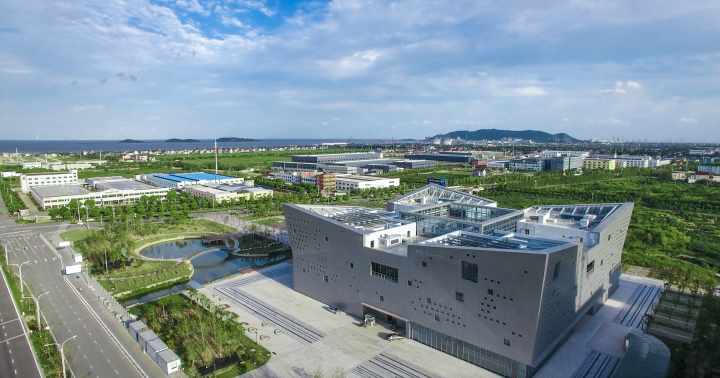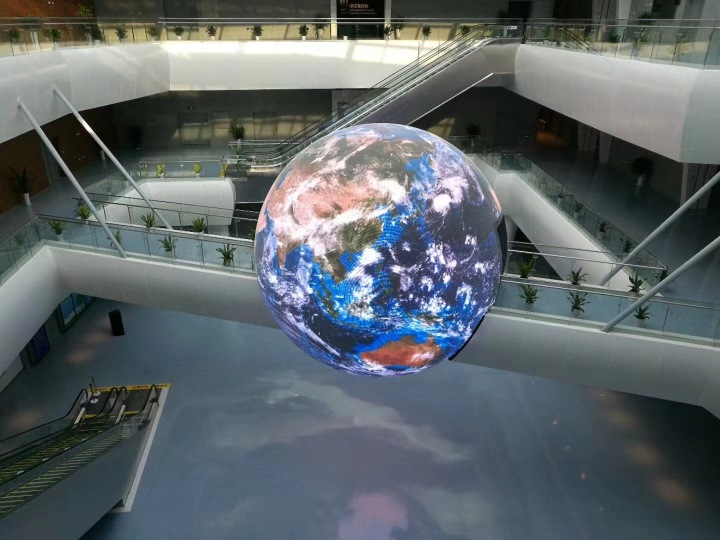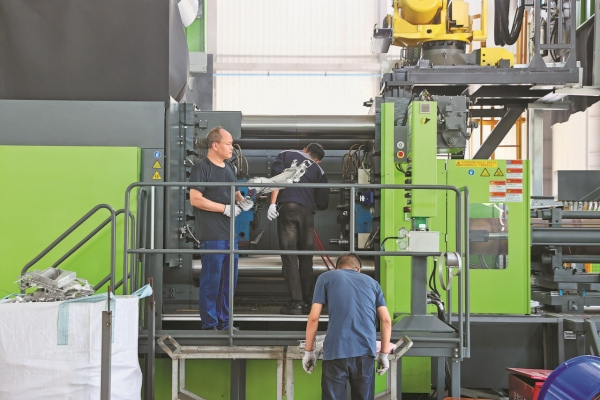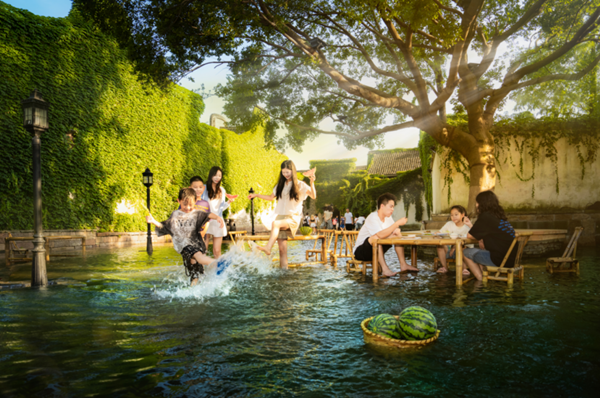
Qinshan Nuclear Power Science and Technology Museum is located in Haiyan, Zhejiang, the birthplace of nuclear power in mainland China, with a total construction area of about 25,700 square meters, an exhibition area of 8,300 square meters, and a floor area of 19,000 square meters.
"This is the largest indoor LED spherical screen in Asia now. The shape of the nuclear power science and technology museum is a jewel containing energy, and the LED spherical screen is the core of the gem." Tao Qiwei, the site director of the nuclear power science and technology museum, said.

the largest indoor LED spherical screen in Asia
Among the mountains, nine nuclear power units stand tall. Under the silent appearance, there is the most complex energy system for human beings so far - a nuclear reactor. A high-voltage power grid crosses the sky, sending electricity into East China, the largest economy in China.
Qinshan Nuclear Power Plant is China's first 300,000-kilowatt pressurized water reactor nuclear power plant designed, built, and operated by itself. Qinshan Phase I 300,000-kilowatt nuclear power unit was loaded for the first time on July 31, 1991. In December of that year At 0:15 on the 15th, it was successfully connected to the grid for power generation, with an annual power generation of 1.7 billion kWh. China has become the seventh country in the world that can design and build nuclear power plants by itself.
There is also an interactive game in the museum: "Measure the radioactivity in daily life". Click on the screen to see which radioactive sources are in daily life and the radiation doses. You can compare them with the radiation doses of nuclear power plants. The museum also displays the radiation monitoring values of the Qinshan base in recent years. The data show that the measured annual exposure dose of the surrounding residents is less than 0.01 mSv/person/year, which is 1/240 of the natural background radiation.
"The monitoring data over the years shows that the operation of the Qinshan Nuclear Power Base has little impact on the surrounding environment. Under normal operation, the annual radiation dose of residents around a one-million-kilowatt nuclear power plant is only 0.01 mSv. It is equivalent to the radiation dose of smoking a cigarette." Tao Qiwei said.
Because the nuclear power plant is not open to the public, an experience area is set up in the museum, so that everyone can have a more intuitive impression of the nuclear power plant and the working procedures of the nuclear power workers.
Before entering the controlled area, the tourists should use the access card to get the electronic dosimeter for measuring the radiation value of the factory area, which can be hung on the chest. Then go to the locker room to put on protective clothing and enter the radiation-controlled area.
The anti-foreign body protection for inspection and maintenance is to prevent some foreign objects, such as gloves and screws, from entering the system and pipelines when the staff is working on site, which will adversely affect the operation of the nuclear power plant.
Through the airlock door, enter the core area of the nuclear power plant - the reactor building. In front of you is the refueling pool, and the fuel assembly is at the bottom of the pool, placed in the "pressure cooker". The large yellow equipment on the side of the pool is a refueling machine, and the staff transports and replaces nuclear fuel by controlling the refueling machine.
The ring crane on the top is a special crane for the installation of heavy equipment, maintenance, and lifting services for reactor refueling. Above that is the sprinkler system inside the containment. When a loss of water accident occurs or the main steam pipe ruptures, boron water is sprayed to reduce the pressure and temperature inside the containment to prevent overpressure failure of the containment.
Once you know this main equipment, you can experience the work of a nuclear power "refueler".
In the end, a radiation pollution self-inspection must be carried out to ensure that the radiation is not "taken out" of the control area. After passing the test, the dosimeter can be returned. Before returning the dosimeter, you can take your own dosimeter to check how much radiation you have received during the period of entering the control area.
Let's take a look at the main control room, which is the "brain" of the nuclear power plant. Nuclear power operators are here to "give orders", and they must always maintain a clear mind, keen insight, and unruffled judgment to ensure the safe operation of nuclear power plants.
The museum is currently the largest nuclear power science and technology museum in China with the richest public experience and the most distinctive features. It is a museum with great significance for popular science education.
Translator: Lou Shihang (intern)
Editor: Ye Ke

